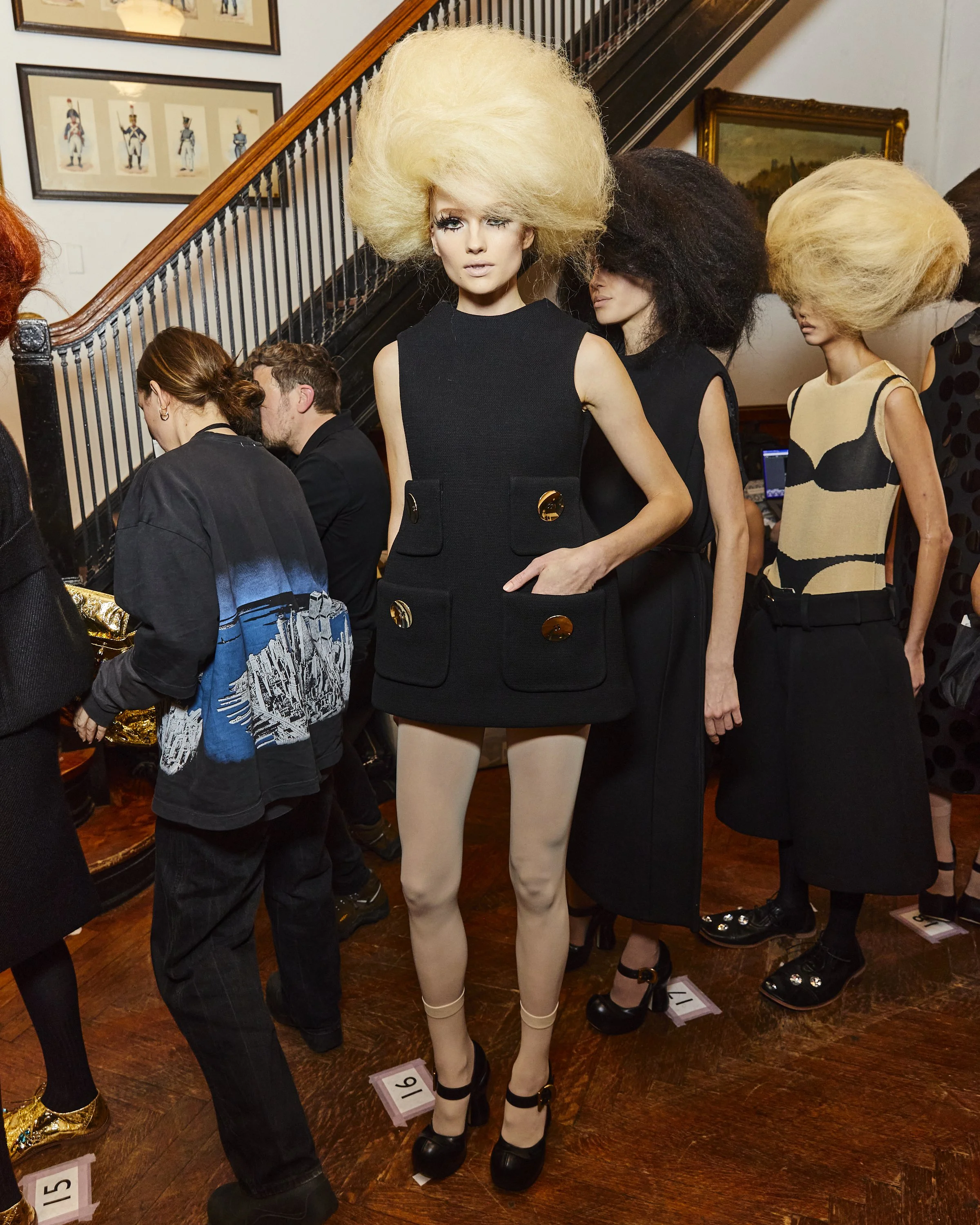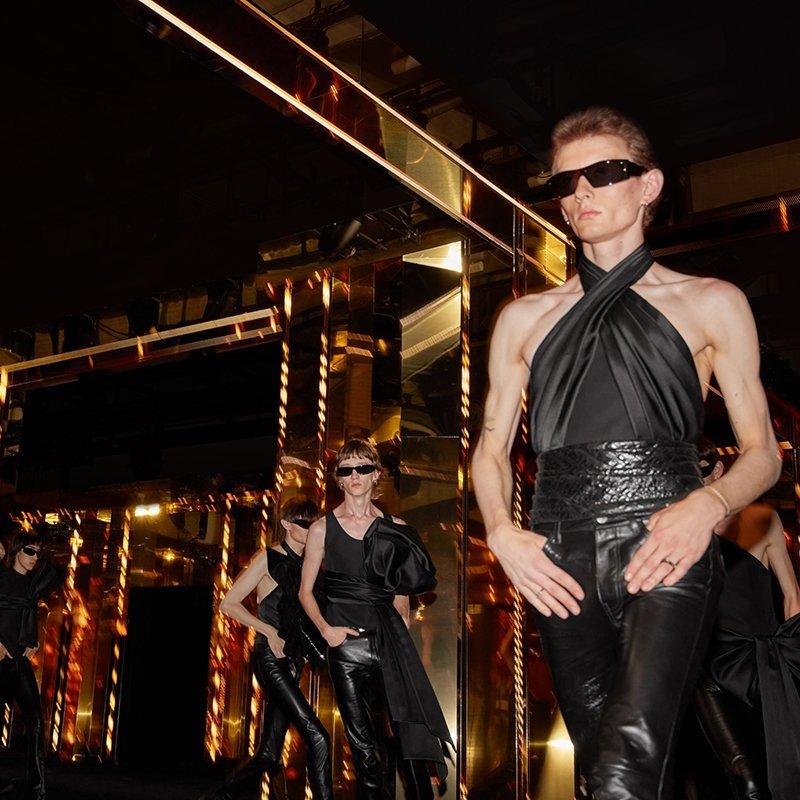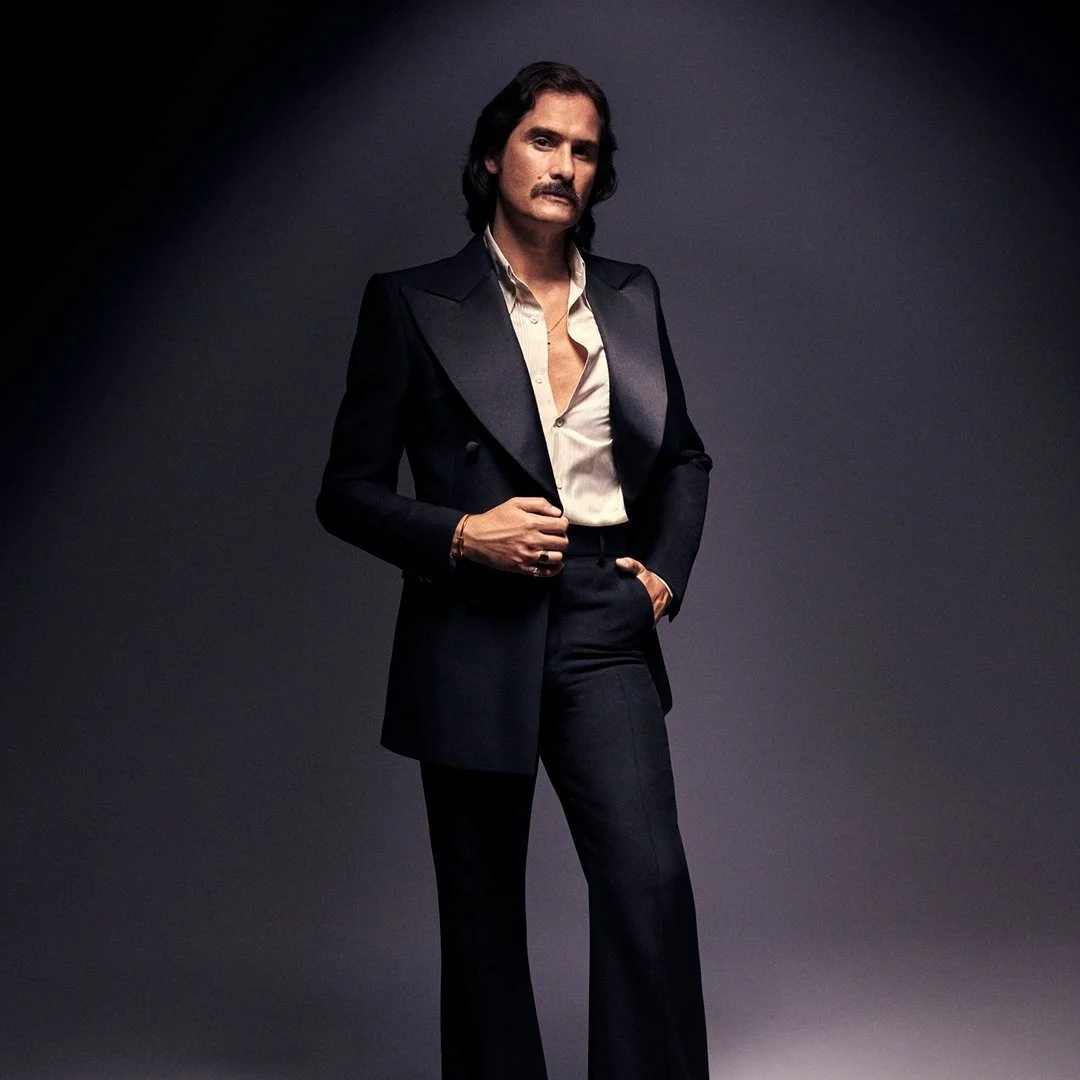Tomihiro Kono.
Hair stylist and erstwhile Junya Watanabe collaborator Tomihiro Kono has made his name cutting and dyeing wigs into fanciful experimental sculptures. Fellow fashion hair pioneer Anthony Turner asks him about his career, his craft and his transformative, otherworldly hair pieces
Anthony: Your way of interpreting and manipulating shapes is something so unique – I’ve never seen it before in hair styling. Where did your influences come from and how did you develop your techniques?
Tomihiro: I was very influenced by British culture when I first started. My first hair salon was in Harajuku and my teacher was an art director for Vidal Sassoon, bringing the signature Sassoon techniques to Japan. There is a difference between head shapes in Japan and England, so we had to redefine how to create those hair styles on a rounder shape of head – that was my start in the industry. Vidal Sassoon did such incredible work in the Sixties and he transformed hairdressing into art. I also remember when I first saw Guido’s work. No one was doing what he was doing, like pulling references from figures like Marie Antoinette – it felt so new and exciting. Everything before was too ‘done’ and too perfect – it just didn’t speak to me, so seeing his hair stories changed my perspective completely. When I went to a bookshop and opened the pages of his Victorian couture story, that is when I began doing what I do now and experimenting with everything. The technique I used to do before was very mathematical and calculated, thinking about neat cutting and perfect layering – it was just too perfect.
Anthony: When I started out working and cutting, all my teachers would request this perfectionism of the same shape and cut – I would even get my hand smacked with a comb if it was not up to the specific method set out. However, I later realised that it is not about the perfection, it’s about the person sitting in front of you – matching their personality, their likes and their unique feeling towards their hair.
Tomihiro: In the long run, I do believe that we are lucky to have had such strenuous training, because it gave us a good foundation to create our own creative ways. A lot of people have the vision without having the foundation, so it ends up falling short.
Anthony I do agree, because you have to know the rules in order to break them. You need to know the fundamentals and proportions of something as specific as hair; you need to get that experience with different shapes and textures in order to know how to experiment later.
Tomihiro: I started working with Comme des Garçons and Junya Watanabe, later creating a book with the hair shapes I had created for them; in it, you can see the process of my work, how the foundation is based on classic hairdressing skills with the identity layered on top of it. For example, if I worked with someone who used to be a doctor, I would have this really deep representation of their past in my mind and bring it to the story.
Anthony Your story for Perfect magazine reminds me of the aquatic world, combined with something very otherworldly. Do you take a lot of inspiration from nature?
Tomihiro: I grew up in the countryside in the south of Japan, so I was always surrounded by nature. When I look at sea creatures, I almost want to showcase them as something completely different and new, which is why I spent last year really immersing myself in studying the different types of nature.
Anthony: Those themes combined with your use of colour creates something really phenomenal. Your way of combining neons with pastels brings a different feeling to the story.
Tomihiro: I have always been inspired by imperfection and experimentation. I really dislike the ‘hairdresser touch’ – I think people often try to play safe and bring the same thing over and over. As a professional, you want to show off your skills, but also be creative and true to your references. And I love bringing a punk touch that feels very DIY.
Anthony: Do you prefer working on wigs or on a model’s natural hair?
Tomihiro: I always used to be ready to go either way to create what was asked of me. However, since Covid happened I started to reflect back on the classic way of doing shoots where there is so much input from so many people, and that didn’t allow me to fully express my vision. When I work with conceptual designers like Junya Watanabe, I am able to be as creative as I want to be and present my full vision, which is what excites me most. The pandemic really allowed me to be my own team and just start playing around with my own imagination. I also started using social media to showcase myself more as a hair artist – especially with Instagram, using it as my own vision board.
Anthony: Your work is so influential to so many people and gets brought up in so many conversations – you really have inspired a lot of young creatives. How do you feel looking back at it?
Tomihiro: It’s good to hear that, because I was working in an era where becoming a well known hair stylist was seen as almost impossible, especially in London, coming from Japan. Something I’ve learned is that the way each person reacts to wigs is extremely individual and unique. Some are scared of wigs and how that changes their appearance; for others it is a creative outlet for them to showcase the different layers of themselves. I also sometimes work by blending their natural hair with wigs, in order to keep the feeling of self-expression and their own identity intact. Moving forward, I really am pushing my passion for wig-making. I absolutely love seeing hair as an object you can create and form from scratch. I am trying to achieve the natural feeling of this sculptural object that still looks and feels like hair, which does not compromise the idea I have in my head. I always aim to show through my work how exciting and exploratory it can be.


















